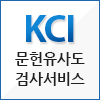This paper examined tourism policy development in Mongolia because few studies on Mongolian tourism policy
development have been undertaken. The purpose of this paper is to analyze inbound tourism policies and their
effects on tourism industry development in Mongolia after the economic transition to a market economy in 1990.
The study was divided into two periods (1990-2000; 2001-2011), which were distinguished by different levels of
tourism policy development in Mongolia. During these periods, the tourism sector became one of the main industries
of the national economy of Mongolia. The periods were identified in terms of tourism policy demands, policy
decisions and the impact of tourism policies. The core framework of this study is based on Hall’s model (Hall,
1994) and a structural model of tourism policy (Goeldner & Ritchie, 2009), which suggested how to analyze and
understand the tourism policy components and elements in the policy making process. Findings indicate core
changes and main indicators of the tourism industry of Mongolia. They show how these indicators changed during
the two periods by comparing the contents with all policies and their results. The roles played by the Mongolian
government are also discussed and some significant implications for the tourism policy of Mongolia are represented
for other developing countries.
key words: Tourism industry, Tourism policy, Government roles, Mongolia
development have been undertaken. The purpose of this paper is to analyze inbound tourism policies and their
effects on tourism industry development in Mongolia after the economic transition to a market economy in 1990.
The study was divided into two periods (1990-2000; 2001-2011), which were distinguished by different levels of
tourism policy development in Mongolia. During these periods, the tourism sector became one of the main industries
of the national economy of Mongolia. The periods were identified in terms of tourism policy demands, policy
decisions and the impact of tourism policies. The core framework of this study is based on Hall’s model (Hall,
1994) and a structural model of tourism policy (Goeldner & Ritchie, 2009), which suggested how to analyze and
understand the tourism policy components and elements in the policy making process. Findings indicate core
changes and main indicators of the tourism industry of Mongolia. They show how these indicators changed during
the two periods by comparing the contents with all policies and their results. The roles played by the Mongolian
government are also discussed and some significant implications for the tourism policy of Mongolia are represented
for other developing countries.
key words: Tourism industry, Tourism policy, Government roles, Mongolia











